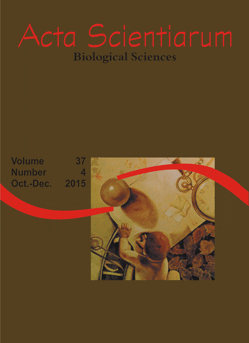<b>Pollen spectrum of the honey of uruçu bee (<i>Melipona scutellaris</i> Latreille, 1811) (Hymenoptera: Apidae) in the North Coast of Bahia State
Abstract
Regional-level studies of floral resources used by social bees for honey production can contribute to the improvement of management strategies for bee pastures and colonies, by identifying the most visited flowers and thus characterizing the various geographical origins of honey. The objective of this study was to investigate, through pollen analysis, the types of pollen and nectar sources used by the uruçu bee (Melipona scutellaris L.) in the North Coast of Bahia. Honey samples were taken monthly from five colonies in an apiary from August 2010 to July 2011. Pollen analysis of honey was performed by using the acetolysis method, followed by qualitative and quantitative analysis of pollen grains. Fifty pollen types belonging to 40 genera and 17 families were identified. The results indicate predominance of pollen types belonging to the families Fabaceae and Myrtaceae, which suggests that the bees preferred foraging from trees and shrubs. These plants should be included in regional reforestation projects in order to improve management of this bee species and honey production.
Downloads
DECLARATION OF ORIGINALITY AND COPYRIGHTS
I Declare that current article is original and has not been submitted for publication, in part or in whole, to any other national or international journal.
The copyrights belong exclusively to the authors. Published content is licensed under Creative Commons Attribution 4.0 (CC BY 4.0) guidelines, which allows sharing (copy and distribution of the material in any medium or format) and adaptation (remix, transform, and build upon the material) for any purpose, even commercially, under the terms of attribution.
Read this link for further information on how to use CC BY 4.0 properly.












1.png)




3.png)













